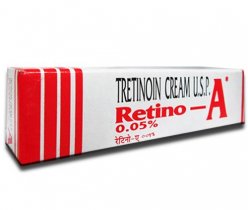Skin problems, including melasma, dark spots, and uneven skin tone, can be frustrating and affect one’s confidence. The cosmeceutical industry is loaded with skin care products, and choosing the right one for your highly pigmented skin among them can be really challenging. One promising prescription formulation that widely helps people with stubborn pigmentation issues is Triluma cream.
Triluma cream benefits are numerous. If you decide to try this prescription medicine, it is essential to understand what Triluma cream ingredients are and how they work. The beginner’s guide will help you learn about Triluma cream uses and everything about the formulation step by step.
What is Triluma cream?
Triluma cream uses: Triluma is a prescription topical treatment available to treat dark skin areas associated with moderate to severe facial melasma, also known as chloasma and mask of pregnancy. What is Triluma cream used for? Well, melasma is a common pigmentary condition characterised by symmetric, brownish pigmentation that typically affects the face and occasionally the forearms and back. Although the exact cause of melasma is still not known, it is believed that the skin condition may be triggered by sun exposure, pregnancy, use of contraceptive pills and hormone therapy treatments. Melasma can happen to anyone, but it is more likely to affect women with darker skin tones. The precise combination of three medications works synergistically to deliver the best possible results in cases of facial melasma. Triluma cream is the only FDA-approved topical prescription treatment, with a fixed-dose combination containing hydroquinone, Fluocinolone, and Tretinoin for facial melasma. Triluma cream ingredients are explained below:
-
- Hydroquinone: Hydroquinone has been used as a skin lightening agent in cosmetics. It works by inhibiting the action of certain enzymes involved in melanin production. Melanin is a skin pigment produced by melanocytes (cells responsible for skin pigmentation), which reside in the skin’s lowest layer. Topical application helps improve skin tone and fades hyperpigmented spots.
- Fluocinolone: Fluocinolone acetonide is a mild corticosteroid topical agent with anti-inflammatory effects. It is effective at reducing the irritative effects of the hydroquinone and tretinoin.
- Tretinoin: Tretinoin is a topical retinoid that may prevent oxidation of hydroquinone and enhance skin penetration and skin cell turnover, which helps eliminate pigmentation and reduces the risk of skin atrophy.
The triple combination therapy makes Triluma more effective than using all its ingredients alone. You can buy Triluma cream online after receiving a prescription from a healthcare specialist.
How to use Triluma cream?
If you are unaware of Triluma benefits and it is a new addition to your skincare regimen, it is essential to use it correctly for safe and effective results. If you’re unsure about how to use Triluma cream, please refer to the information below. Here is the beginner’s beginner-friendly guide for safe use of Triluma cream:
-
- Prepare your skin: Rinse your face with a mild soap or cleanser. Pat the skin dry completely before you apply the depigmentation cream. Make sure you do not apply the cream to wet skin.
- Apply a small amount: A pea-sized amount is sufficient to cover the entire affected skin area. You need to squeeze out a pea-sized amount on your fingertip and apply a thin coat onto the discoloured skin area. Rub the medication gently in a uniform motion into your skin. Continue to rub until the medicine is completely absorbed. If you can see the formulation, you are using it too much.
- Apply sunscreen daily: Consider using a sunscreen with an SPF of at least 30, along with a wide-brimmed hat, to protect the treated facial skin from direct sunlight. This is because only a small amount of sunrays is required, and not only does sunburn worsen your skin condition. Moreover, if you get a sunburn, discontinue treatment to allow the sunburn to heal. n
- Consistency is the key: Use Triluma cream once daily at night. Appropriate usage requires a consultation with a dermatologist. Follow the usage instructions provided by your healthcare provider, and you can expect to see results within 8 to 12 weeks of regular use. Improvement in the skin’s appearance can be seen earlier. Make sure you never run out of the medication; refill it in a timely manner. You can easily buy Triluma cream online at the lowest price.

For how long can the Triluma cream be continued?
Triluma topical treatment is indicated for short-term use, up to eight weeks, to treat moderate to severe melasma. It is not intended for long-term use (more than eight weeks) or to maintain the desired effects. Long-term or unsupervised use can contribute to adverse effects, skin thinning, and rebound pigmentation. If melasma reappears after stopping the treatment, your dermatologist may recommend maintenance treatment or alternative options.
What precautions should beginners take?
If you are new to Triluma formulation, you may have several questions or concerns about its use. Here are some important dos and don’ts:
Do’s
-
- Be sure to perform a patch test before applying Triluma cream
- Follow your dermatologist’s advice and stick to the provided usage restrictions (if any)
- Use sunscreen every morning without ignoring the sun protection
Don’ts
-
- Do not use Triluma cream while pregnant or breastfeeding.
- Do not stay in sunlamps or any artificial source of sunlight, such as tanning beds.
- Avoid staying in excessive heat or cold, as skin treated with this triple combination may be more sensitive to temperature changes.
- Do not use any other medicines with hydroquinone/Tretinoin/Fluocinolone formulation unless you have consulted your dermatologist.
What are the common side effects of Triluma?
While using Triluma cream, your skin may experience mild to moderate redness, dryness, burning, peeling, and itching. The triple combination medicine contains a corticosteroid as one of its active components. Certain Triluma cream side effects have been reported with topical corticosteroids applied to the skin, such as irritation, itching, acne, dryness, infection of the hair follicles, inflammation around the mouth, changes in skin colour, skin infection, allergic reaction, stretch marks, and sweat problems. Some Triluma users may experience dark spots on their skin, rash, skin redness, acne, tingling, skin bumps, tiny red lines, or rosacea (a condition characterised by skin redness). If you are concerned about Triluma cream side effects and how your skin is reacting to this formulation, call your dermatologist.
When to stop treatment with Triluma cream
One needs to stop using Triluma cream and contact the dermatologist if they experience:
-
- Severe or continued irritation, oozing, scaling, blistering, or crusting
- Irritation of your eyes, nose, or mouth
- Severe burning or swelling of the skin
- Blue black skin colouration on the site of application
- Any breathing problem
If you conceive during topical treatment, inform your dermatologist immediately. Your dermatologist will discuss the potential risks that your baby may be exposed to. The use of Triluma in early pregnancy may be more likely to give rise to birth defects than using it later in pregnancy.
Conclusion
Triluma cream offers new hope to individuals with melasma. It may finally be able to manage those stubborn dark patches on your skin that were the reason behind your low self-esteem. The innovative formula, designed by combining three active ingredients — hydroquinone, tretinoin, and fluocinolone — is able to reduce pigmentation in cases of moderate to severe melasma within an eight-week timeframe, providing users with relief much faster than any other skin treatment currently available.



